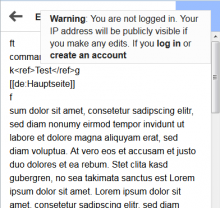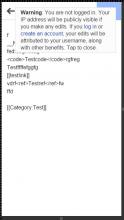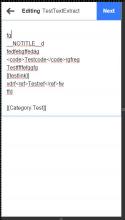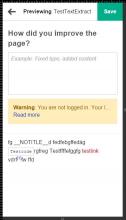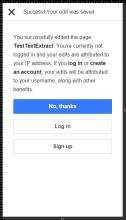When an unregistered user tries to edit a page in the mobile site, an interstitial is shown, which has a warning in yellow, a login button in blue, then in white "register" and finally "continue editing". Requested deliverables:
- "Continue editing" should be the first option, in blue.
- This warning should probably not be an interstitial, so that only one click is needed to reach the editing window. On devices which support JavaScript, it should be an alert which goes away by itself after some seconds.
Anecdotal evidence: a complaint by an unregistered user that mobile requires registration; an experienced user tries quickly and confirms; three other experienced users are unable to disprove the claim despite knowing of the recent changes in permissions (T85317). Clearly, we are conveying the incorrect message here.
Empirical evidence:
